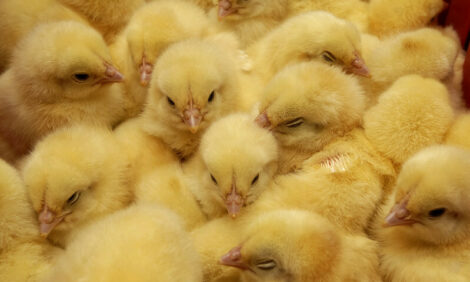



Shake Up on the Cards for Food and Drug Safety
CHINA - China will upgrade its existing State Food and Drug Administration to improve safety standards for foodstuffs and pharmaceuticals, according to a report delivered by State Councilor Ma Kai to the annual session of the country's top legislative body on Sunday.The changes are part of a series of ongoing reforms to cut red tape and reduce administrative intervention in the market.
The new body, the ministry-level General Administration of Food and Drugs, will be responsible for unified supervision of standards for food and drug safety and quality in production, distribution and consumption, said the report, which emphasized that overlapping supervision by different departments and a number of supervisory "blind spots" are the weak links in the current supervisory system.
"The restructuring will better facilitate the enforcement of the food safety laws and regulations and improve the safety of the nation's food and drugs," said Chen Xiaohong, vice-minister of health and a member of the Chinese People's Political Consultative Conference.
In the Government Work Report delivered on Tuesday at the opening of the 12th National People's Congress, Premier Wen Jiabao said China still faces great challenges on food safety and called for the regulatory and supervisory systems to be reformed and improved.
Wen urged the greater coordination and integration of government efforts and corporate accountability to ensure food safety. "From production to consumption, the whole process needs to be supervised," he said.
"Integrated control and supervision are now required to fit the national situation and help reduce management costs," Mr Xiaohong said.
According to Mr Xiaohong, the general principles governing the restructuring include ensuring that individual departments have overall control of each process to avoid split responsibilities that could lead to inefficiencies.
A major shift
Yan Weixing, deputy director of the China Food Safety Risk Assessment Center and a CPPCC member, said the initiative is a major shift from the previous food safety control mechanism, whereby different responsibilities were handled by different government departments.
In 2004, the State Council issued the Decision on Further Strengthening Food Safety Supervision, which first recognized supervision by sections as a main method of food safety control.
Before that change, food safety was regulated by the ministries of health and agriculture.
The 2004 document divided the supervision of food safety into four areas jointly managed by the departments of agriculture, quality supervision and inspection, industry and commerce, and health.
The production of primary agricultural products was supervised by the agriculture department, the quality and daily hygiene supervision of food processing was overseen by the quality supervision and inspection department, and supervision of food circulation and distribution was the responsibility of the department of industry and commerce.
Mr Weixing said that many food safety experts disagreed with the 2004 changes. In the past decade, "problems such as overlapping responsibility or blind spots have arisen under the system", he pointed out.
Also, the supervisory responsibilities for some emerging food businesses are difficult to define clearly, he added.
A conflict of standards has also happened occasionally, said Chen Junshi, an academician at the Chinese Academy of Engineering and a food safety expert.
For example, the plant daylily is categorized as a dry vegetable. The sulfur dioxide residue produced during the drying process is within limits set by the Ministry of Agriculture. However, the same level of residue is illegal under standards set by the Ministry of Health.
Contradictions
"We have seen standards contradict each other because of the involvement of so many departments," he noted.
At least five regulatory bodies - including those for quality supervision, food and drugs, and industry and commerce - are currently involved in food safety. That's "too many", according to Mr Junshi.
In future, only the new body will be responsible for the supervision of food safety, said Mr Weixing.
However, given such a long chain from farm to dinner table, "one single department can barely manage the control of food safety alone, let alone the other tasks," he said.
Yan suggested that two or three departments should supervise the whole food safety process, which would be in line with international norms.
Supervision of plant cultivation, the raising of poultry and the breeding of livestock should remain with the Ministry of Agriculture, he said, while the Ministry of Health is entitled to set the standards for food safety.
He also stressed, "enforcement requires expertise from a strong technical support team".
In addition to the redefinition of the administrative function, other factors such as the quality of personnel, particularly in the technical support teams, should be taken into consideration.
Chen Xiaohong indicated that a national food safety standards center would be soon established. "Only by the use of clearly defined standards can law enforcement workers do their job correctly and efficiently," he said.
The center will be responsible for setting and overseeing food safety standards, which will be unique and mandatory, he noted.
According to Yan Weixing, the new center will be based on the existing China Food Safety Risk Assessment Center. "Optimizing the existing units will help to avoid a waste of time and funds," he explained.
The scale of the job is huge and complex, so staff numbers at the center will be boosted to 400 from the current 200, he added.
At present, China has more than 5,000 standards on food quality and hygiene, formulated by a number of different departments, according to the Ministry of Health
However, the standards for farm produce are even more complex, said mr Weixing.
"The question of which department, health or agriculture, will be in charge of that remains unclear," he said.









